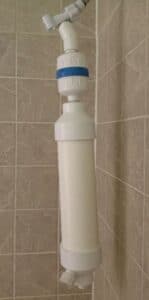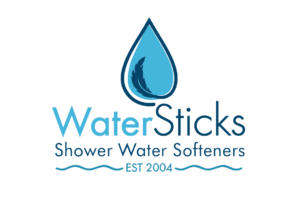Frequently Asked Questions
If you have a shower with a long vertical rod mounted to the wall (like most of our international customers), you can usually install the ShowerStick with some modifications. Below are some photos sent to us by our wonderful customers to help give you an idea how you can install the ShowerStick. As you can see in the photos, you'll need 2 hoses. The ShowerStick comes with a hose (the white one) and you can use your existing hose. It’s best to use our hose attached to the bottom of the ShowerStick to ensure it will drain properly during regeneration. You’ll also see that cords, ropes or zip ties (nylon string such as Home Depot's "Twisted Nylon Mason's Line" will also work) have been used to secure the ShowerStick. You can use different items, but the most important thing of course is that you set it up so it’s secure. And we’d love it if you sent us a photo of how you end up installing yours!
Note: If you decide to order, we need your approval of our International Shipping Terms before we ship your order. Please see the Shipping page on our website for detailed information.
You should replace the KDF filter yearly (if 2 people are using the shower) or sooner if you smell the presence of chlorine. Filtering chlorine from your shower water benefits you, and it’s also a great way to protect the resin to ensure it performs well and has a long life.
No! These filters mainly remove chlorine. They do not remove calcium or magnesium (hard water minerals). Hard water minerals irritate your skin and dry your skin & scalp the most. They can only be inexpensively removed with a water softener such as our salt regenerated resin based ShowerStick. (If you use a hard water test kit on the water coming from a ‘filter’ you will see that it will not test as soft.)
Yes, it uses the same resin beads and technology (“ion exchange”) as any salt based water softener and provides the same quality soft water for your shower as any softener can.
We only sell wholesale direct to you via our website.
If you drank an 8 oz. glass of softened water you’d consume approximately 12.5 mg of sodium (approx. 200 mg per gallon). By comparison, 1 Alka Seltzer tablet contains 445 mg of sodium and one can of Campbell’s Chicken Noodle Soup contains about 2225 mg of sodium. However, you aren’t using the water from the ShowerStick as your drinking water. Therefore, only very trace amounts of sodium seep into your skin when showering in softened water.
We recommend using the shower head that comes with the ShowerStick because it doesn’t have any switches (on/off, massage, etc) which can sometimes create a back pressure issue. What this means is that when you put the shower head on the floor of the shower to regenerate, some shower heads with switches or massagers won’t allow all of the water to flow out of the ShowerStick in order for you to then be able to pour all of the salt water inside. You can try a different shower head to see if it will work. Remove the regeneration port cap then lay the shower head on the floor and see if the water drains at a steady pace without any resistance (takes about 2 minutes). Then pour your salt solution inside to regenerate. If when you are slowly pouring the salt water inside it starts to back up and not let you pour it in at a steady pace as it flows out the shower head, then you know you either need to use the shower head that came with the ShowerStick or remove yours each time you regenerate.
Regenerate, then run water through it for a couple minutes to drain out most of the salt. Keep your ShowerStick full of water so the resin stays moist. All 3 openings need to be sealed so air doesn’t get inside to dry out and kill the resin. Keep the regeneration port cap attached and seal each end with our red air plugs (available on our website’s Store page), or anything that will keep air from getting inside and won’t damage anything.
Tips:
- Don’t store the ShowerStick somewhere where it will freeze and don’t store it in temperatures above 120 degrees.
- Don’t leave the hose attached to the bottom of the ShowerStick because it will leave the bottom fitting susceptible to breakage. Also, don’t leave anything attached to the top fitting of the ShowerStick.
- If the ShowerStick is full of water when you store it, but you forget to seal off the ends, it will take a while for all the water to evaporate and for the resin to then dry out and die. It depends on the external temperature and the amount of water left inside. To find out if your resin is okay, backwash (see below), regenerate, then use a hardness test kit or test strips to determine if it’s still softening the water (remember to run the water for 2 minutes after regenerating and before testing to rinse out most of the salt so it won’t get picked up on the test, since salt is also a mineral).
- If your installed ShowerStick isn’t used for a few months, it might be okay. The only place for air to get inside is through the small holes in the shower head, so it would take a while for enough air to get inside and evaporate all the water and dry out the resin. It’s best if someone can run water through it for a minute at least every couple of months.
Before re-installing the ShowerStick, backwash the resin then regenerate. Backwashing instructions can be found at the bottom of our website’s FAQs page. Please watch our Installation video on our website so you won’t have any issues when re-installing.
Water softening salt is a coarse grain salt that usually comes in chips or pellets and contains dirt and sediment. This type of salt is made for whole house water softening systems. These systems are capable of breaking down the chips or pellets into a fine grain and they have a filter to get rid of the dirt and sediment. Since the ShowerStick doesn’t have a built in system to do this, a granulated (fine grain) salt such as iodized or plain table salt should be used when regenerating. The chunks or pellets won’t dissolve in your water bottle so the resin inside the ShowerStick won’t get enough salt to properly regenerate. And you definitely don’t want to get the pellets inside the ShowerStick because they will sit inside the resin bed and the dirt and sediment from this type of salt will eventually destroy the resin.
Chloramine is a combination of ammonia and chlorine and when combined, forms a very strong bond. To remove chloramines from your water, this bond must be broken, then both the ammonia and chlorine need to be filtered. A softener can’t do this, and neither can a shower filter. A whole house filtration system that contains a very large volume of catalytic carbon (much more than the volume that fits inside a shower filter) would need to be installed. According to the chloramine.org FACTS page, "There is NO certified showerhead filter to remove chloramine". Unfortunately, it’s just not possible.
0 - 3 grains = soft water, so you should regenerate to keep the water in this range. Follow the instructions on the test strips package.
Regeneration instructions can be found on page 2: Click here»
When you turn your water back on after its been off for maintenance, repairs, etc., it usually comes through in a high pressure spray. This can cause any dirt, sediment, etc. in the plumbing system to break free and cause clogs/blockages in your fixtures. For this reason, it’s important to first turn the water on at all faucets except the one where your ShowerStick is located (or, you can remove the ShowerStick and KDF filter (if installed) prior to the water being turned off). Leave the faucets on until the water runs clear. If you forget to do this, then you should backwash the resin inside the ShowerStick, the media inside the KDF filter (if installed) and clean out your shower head, hose, and mount. Backwashing instructions can be found at the bottom of this page.
Although the ShowerStick costs more to purchase initially than a shower filter, it costs a lot less in the long run. Think about how much you spend yearly on shower filters and multiply that number by 10. Ten years is the average lifespan of the ShowerStick, so it ends up costing far less over a 10-year period and it does so much more than a filter. It also contains more than 10 times the amount of material than what’s inside a shower filter. And, included with the ShowerStick is a handheld shower head and hose, a shower arm mount (the cradle that holds the head) and test strips.
We decided to post this Q&A because we’ve been asked this question countless times by people who have become frustrated after spending a lot of money on various shower filters that don’t give them the results they’re looking for. To soften water, you need to use a large volume of resin, much larger than would ever fit inside a filter the size of your hand. Even if resin was ever put inside a filter cartridge, it would be such a small amount that it would only soften the water for a few minutes then it would never soften water again since you wouldn’t be able to regenerate it. Many people have been misled because when some of these companies set up their listings they include keywords or phrases such as “soft water”, “soft water effects”, “soft skin”, etc. and you’ll end up on their site or listing thinking that’s what their product does. But it doesn’t. And many people aren’t aware of what soft water really is or that filters don’t in any way soften water or that there’s more to improving your water quality other than just filtering it. Unfortunately, there are companies who take advantage of people and aren’t always truthful regarding what their product can do (and some of them don’t really understand what the product they’re selling does). They want to sell their product plain and simple. You can challenge them and ask, “If I use a hardness test with your filter, will it show it’s removing hard water minerals like calcium and magnesium?” If their response is “yes” and you take a chance and buy it but find out otherwise, will they pay for return shipping if you decide to return it (which could be expensive international shipping) if their posted return policy says they won’t? Even the largest internet retail company in the world (no need to mention their name) won’t do anything about the companies who sell on their site and falsely advertise what their product can do. (This company doesn’t even require their sellers to show where their products are being shipped from.) So, it’s hard to know who to trust and what information (especially on the internet) is true or accurate. But we as consumers must do the best we can to do research and educate ourselves prior to making purchases and we need to do what we can to be sure a company is legitimate. Otherwise, we may end up getting ripped off. Luckily there are companies that exist who really care about helping people and giving honest and accurate information, and we are one of them. We will always answer your questions thoroughly and give you examples or information to backup what we’re saying. For example, if you aren’t convinced that a shower filter isn’t capable of softening water, we’d let you know that you can use any hard water test kit and it will show no difference in the hardness of water after you add a filter. Only a softener can do so. And only if it’s a softener that’s regenerated with salt water (works via Ion Exchange). Two ways to soften the water in a shower: install a whole house water softener or a portable shower water softener, like the ShowerStick: ShowerStick
- We’ve obtained an SSL certificate so that our website is secure. Instead of “http” as you’ll see with some other website addresses, you’ll see “https” in our website address line (https://watersticks.com/).
- Our email address and phone number are legitimate which you can easily verify.
- Per California law, online businesses who sell to consumers in California are required to have a link on their website’s homepage to their privacy policy. You’ll find this link at the bottom of our homepage.
Soluble iron (ferrous iron - which is clear) is likely to be removed by a softener, but "precipitated" iron (ferric iron - which is a rusty brown orange color) often slips right through the resin. If the pH of the water is below 7, a softener will likely remove iron but if it's over 7, results may not be good since ferrous iron converts to ferric iron faster in higher pH water. If the pH is above 7, you should consult with a water treatment company who can test your water and make recommendations based on the results. If you purchase the ShowerStick and you have a lot of iron in your water, we recommend that you backwash the resin more frequently than normally required. For backwashing instructions, please see our FAQ page.
The resin inside the ShowerStick does not require any special handling and can be disposed of in a standard trash receptacle along with the ShowerStick body and other parts. The KDF filter housing is recyclable and the media inside the filter is environmentally sound and 100 percent recyclable.
If you installed a flow control valve, please check to be sure it isn't set to the off position. If this isn't the issue, please contact us.
Resin beads inside softeners are regenerated with salt water, and saltier water feels more slippery, like the feel of ocean water on your skin. And with the absence of hard water minerals like calcium and magnesium, this effect is more prominent. You may need some time to get used to it if you’ve never had a softener before. Although it feels like soaps are difficult to wash away since your skin feels “slick” or “slippery”, your skin is actually rinsed of soap right away.
According to the USGS Water Science School, “When using soft water, your skin has that slippery feeling even after extensive rinsing. You might think you cannot rinse off all the soap on your skin, but actually you are cleaner than if you used hard water! You are feeling hydrated skin, not skin with a soapy residue.” https://water.usgs.gov/edu/qa-chemical-soap.html
A good way to prove this is by doing the bathtub test. If you take a bath and wash with soap in hard water versus soft water, you’ll end up with a bathtub ring if you use hard water but not if you use soft water. This is explained in more detail on Culligan Water’s website: https://www.culliganmidmissouri.com/resources/water-quality/why-is-soft-water-so-slippery/
Also, when using soft water you should use about 50% less soap and shampoo since they lather that much better in soft water. Most soaps and shampoos are made to be used with hard water since most people have hard water. To get these soaps to lather well in hard water, harsh chemicals are added to them such as sulfates. But when you have soft water, you don’t need these added chemicals since these products lather much better in soft water. So, it’s recommended that soap bars with natural ingredients or clear liquid soaps that are free of perfumes, dyes and other harsh chemicals are used with soft water. Here’s a source for more information about this: https://www.martinwater.com/service-tips/how-to-use-soft-water/
Usually this happens if you have the KDF filter (or any other type of filter) installed with the ShowerStick and it has become clogged. This can happen when it’s past its replacement period. Remove the filter to see if the pressure increases with only the ShowerStick attached.
Most of our customers don’t experience a reduction of water pressure after installing the ShowerStick. However, if you currently have a shower head without a flow restrictor, or if you have an older shower head with a flow restrictor with higher GPM’s (gallons per minute), then you might notice a difference. Since 1992, federal law prohibits the shower flow rate from exceeding 2.5 GPM and several states have elected to mandate a more conservative flow rate (1.8 GPM as of July 2018 in CA). The GPM flow rate has decreased over time. So your current shower head’s GPM could be higher than 1.8 depending on when it was manufactured. And although you’d have about 35% more water pressure if you removed the flow restrictor, you’d also need to regenerate your ShowerStick about 35% more often. Keep in mind that higher water pressure requires more frequent regenerations.
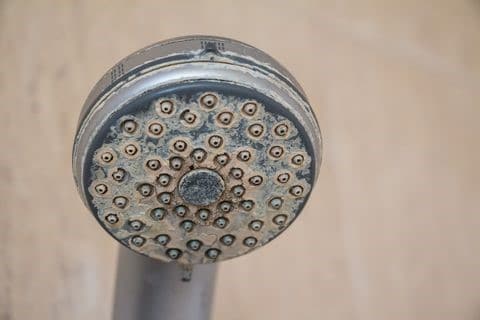
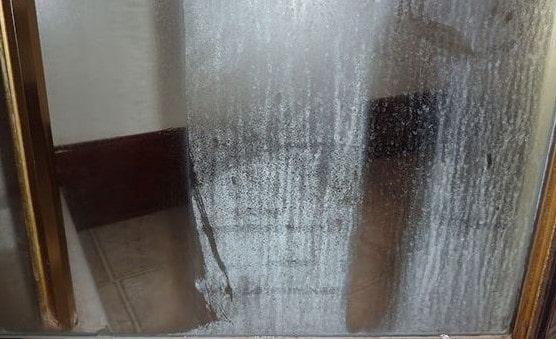
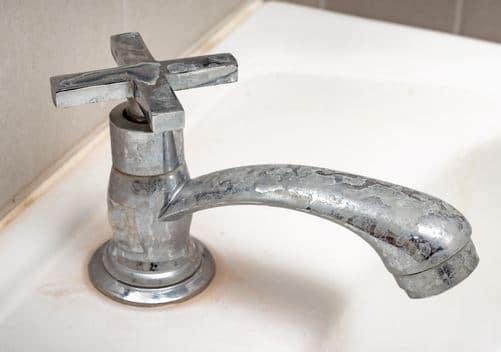
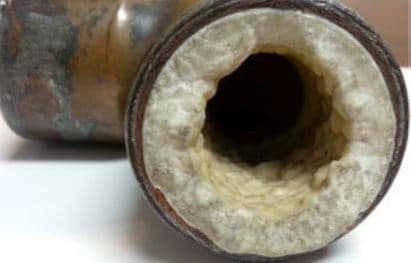
TDS consists of hard water minerals plus all other dissolved solids in the water (dirt, sediment, etc.). Water softeners, whether it’s a whole house unit or the ShowerStick, remove calcium and magnesium hard water minerals, but not all the other dissolved solids in the water. Therefore, a TDS reading will always be higher than a hardness reading. So, when testing for hardness, you need to use a hardness test (ours or anyone else’s) but not a TDS meter. To remove TDS, you need to use a very different type of resin which isn't potable (drinkable), so it can’t be used in a shower, and you can’t regenerate it with salt water. This type of resin is used along with softening resin when washing vehicles, windows, solar panels, etc. because then you don't have to worry about any spots at all (you don't even have to towel dry). It’s not possible to remove the other dissolved solids, only calcium and magnesium in your shower alone. The very most you can filter in your shower alone is hard water minerals (with a shower softener) and chlorine and some microorganisms (with a KDF shower filter). If you want anything else removed in your shower water, you’d need to install a whole house filtration system and the type would be dependent upon what you want filtered from the water. For more information, you can search online for “does a water softener remove TDS”.
The very best salt to use to regenerate the ShowerStick is plain or iodized table salt (Morton’s or any store brand). Other types of salt (sea salt, kosher salt, rock salt, softener salt, etc.) are a coarser grain than fine grain table salt, so they won’t dissolve as well in water and therefore won’t do as good of a job to regenerate the resin. If you can get other types of salt to dissolve completely in water, then you can try using them. To verify if they’re working to regenerate the resin, you can use the test kit "or test strips" after regenerating. If you get bubbles/suds to or past the line after adding one drop of solution, then the salt worked fine. After regenerating, be sure to run the water for 2 minutes before using the test kit "or test strips" to get most of the salt rinsed out so it won’t get picked up on the test results since it’s a mineral too.
To clean out and loosen up the softening resin inside your ShowerStick, you can backwash it. This should be done at least yearly or 2-3 times a year if you have well water or water that contains a high amount of iron (rusty in color and very noticeable).
There are 2 different ways to backwash:
Option 1: Inside your shower
- Remove the hose from the bottom of the ShowerStick (be sure to keep the black washer up inside the end of the hose).
- Remove the ShowerStick and keep the regeneration port cap attached (leave everything else installed).
- While holding the ShowerStick horizontally in both hands, shake up the resin inside to loosen it up.
- Turn the ShowerStick upside down then re-attach it so that it’s now hanging upside down (see picture).
- Turn the water on and let it rinse through for at least a few minutes.
- Remove the ShowerStick.
- Shake up the resin again.
- Repeat this process until you’re able to get a strong stream of water to run through and until the resin feels like it has loosened up.
- Remove the old plumbers tape and re-apply new tape to the male fitting on top of the ShowerStick (wrap clockwise 4 times around) then re-attach it to the assembly. Be sure to hand tighten just snug, as over-tightening can cause breakage.
- Make sure the black washer is lying flat inside the end of the hose then re-attach it to the bottom of the ShowerStick.
- Regenerate!
-OR-
Option 2: Outside at a garden hose
- Remove the ShowerStick body and take it outside to a hose (keep the regeneration port cap attached).
- While holding the ShowerStick horizontally in both hands, shake up the resin inside to loosen it up.
- Hold the ShowerStick upside down then hold the hose up to the fitting at the bottom of the ShowerStick the best you can, then turn the water on, but not on full blast. Since there’s more water pressure from an outdoor spigot than in your shower, it can damage the resin filter baskets inside the ends of the ShowerStick that hold the resin inside.
- Run the water through the ShowerStick backwards (up through the bottom and out through the top) for a few minutes.
- Turn off the water then shake up the resin again.
- Repeat this process until you’re able to get a strong stream of water to run through and until the resin feels like it has loosened up.
- Remove the old plumbers tape and re-apply new tape to the male fitting on top of the ShowerStick (wrap clockwise 4 times around) then re-attach it to the assembly. Be sure to hand tighten just snug, as over-tightening can cause breakage.
- Regenerate!
